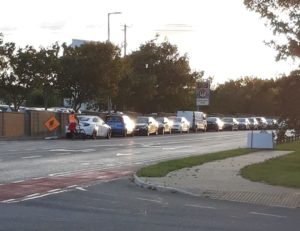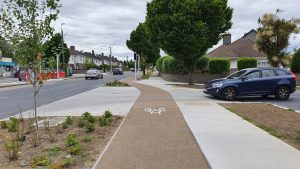
Cover Letter
WexBUG is a bicycle users group made up of Wexford residents who are trying to drive change from car centred thinking to active travel and cycling in Wexford.
We are a group comprising 200 members from a cross section of Wexford society.
We want provision for cycling and active travel. Not just lines painted on the road. We want grannies and kids and non-‘cyclists’ to feel that cycling is a safe and valid choice. We want to give our children something of the childhood we had: cycling to school, to the beach, some independence, health active choices. Not stuck in a car being driven to and from school, becoming more obese, having to avoid cars parked on footpaths outside schools with idling engines emitting pollutants. It is expected that this is the first generation that will live a shorter life than their forebears. We don’t want this to be the legacy we leave our children!
WexBUG – Wexford Bicycle Users Group
WexBUG strongly supports this proposal for a greenway.
We would make specific points as they relate to the various sections below:
Wexford bridge section
WexBUG strongly supports the element of the proposal for a segregated cantilever bike path on Wexford bridge. This element alone will significantly increase the possibility for active travel and remove a significant bottleneck (i.e. the bridge) for cyclists coming into and leaving Wexford town.An original engineering solution like a cantilever bridge can be an attraction in its own right and is likely to feature in future Wexford Town and cycleway publicity.
Castlebridge village has the highest reliance on car travel in all of Leinster. 75% of all trips are done by car. WexBUGhas previously made a proposal for a segregated cycle lane toCastlebridge and this improved bridge access would make this proposal even more effective at providing for active travel north of Wexford bridge. This proposal is attached.
The value of this bridge element could be leveraged further by re-looking at the Curracloe greenway proposal. Perhaps initial sections of this proposal that included access to the Wildfowl pumphouse and along the R741 could be put in place to incrementally increase the value of the bridge cycle access improvements proposed here. This would avoid the main reason for rejection of the plan in the first place (impact on Slobs SAC and Raven SAC)
With the increase in access that this bridge bike path on Wexford bridge would bring, there would be a need for a road crossing at the Ferrybank hotel for people coming over the bridge heading out to Castlebridge.
The value of this element could be further leveraged by proposed improvements to the reclaimed area between the Public Pool and the fishing boat landing area. This would effectively double the size of the Quay public realm available to Wexford residents and visitors.
Trinity Wharf/Street area
WexBUG suggests that there is a need for an alternative to the quay route (i.e. the part that routes through Trinity Wharf) if the Trinity Wharf development doesn’t go ahead. This greenway should not be contingent upon a separate development.
While WexBUG sees the coastal option leaving Wexford town as a very scenic and attractive option, there are factors to consider in this:
Will the route be so isolated that women and children will avoid it – particularly in winter or at night. This will greatly reduce the utility of this option for active travel.
Street lighting (low impact) and regular exit points will be a requirement along this section for security reasons but also to provide access to homes and workplaces along the route.
Alternatively, WexBUG notes the extra active travel benefit of Trinity street/Faythe routing to leave Wexford town. This would most likely require some form of associated one-way (for cars) road arrangement along William Streetwith the Faythe and Fishers Row or Parnell St providing the opposite direction of car travel. Options for routing through the Faythe should also be considered. This would bring benefits of routing by John of Gods School.
On-road routing to leave Wexford town would increase the utility value for workers in Danone, Waters, Drinagh business park and the many businesses in between.
WexBUG also considers that there are extra active travel benefits of having a 2-way cycle lane on the quayfront roadrather than the quay pedestrian areas. Advantages of being away from busy pedestrian/boat work areas especially in summer and better access to Wexford town businesses along quay and along main street.
If the route on the quays is chosen, very clear demarcation of the route on the quay is very important! It should not interfere with free flow of people, e.g. ground markers and path colouring that is permanent rather than temporary colouring that deteriorates quickly with age.
Inset pavement marking
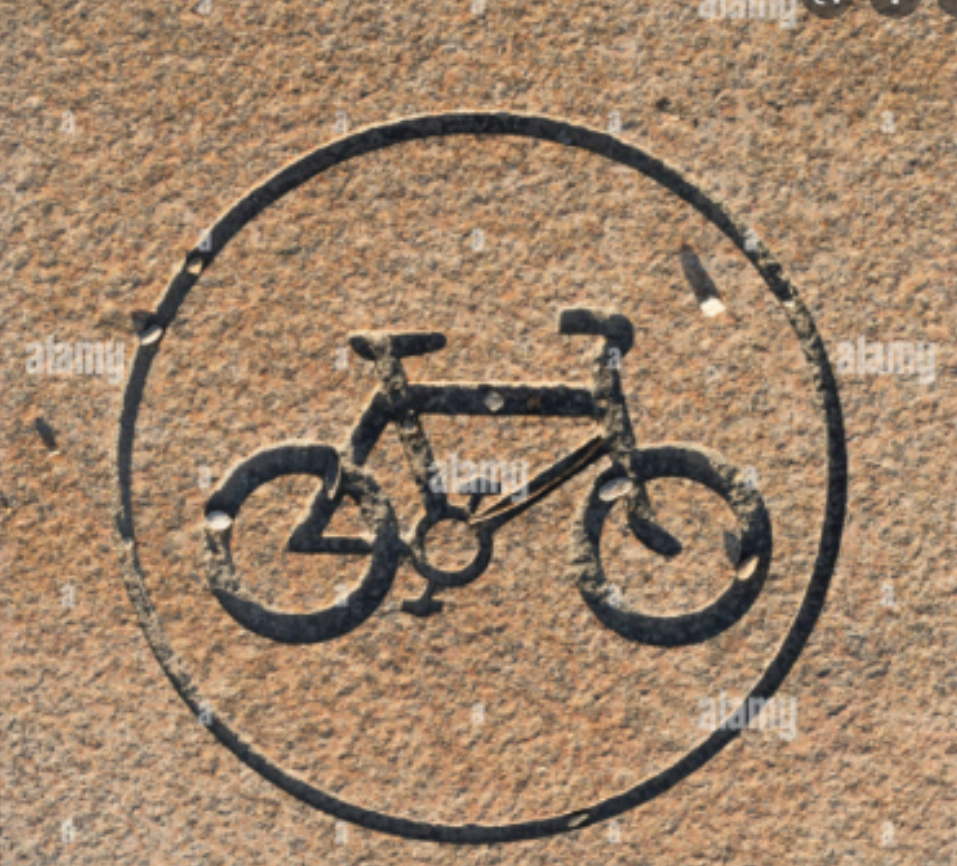
– LED lighting has been used to great effect in the Netherlands to demarcate cycle routes. In high traffic areas like Wexford Quay this could be worth the extra expenseand would be a significant contributor to cycleway publicity
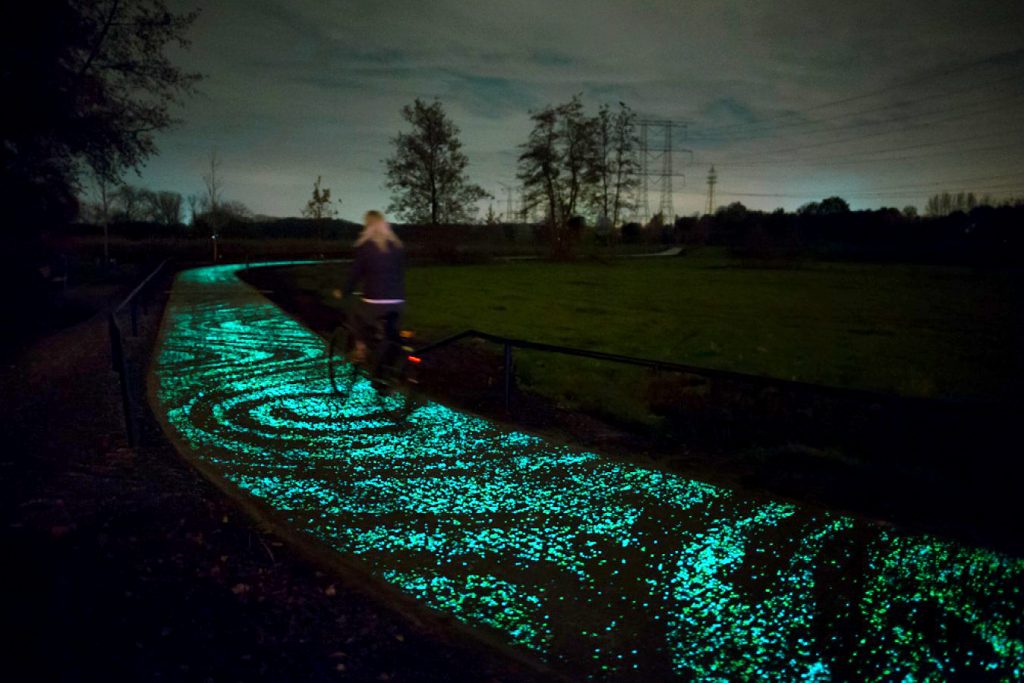
The surface of the Van Gogh-Roosegaarde Bicycle Path is coated with a special paint that uses energy gathered during the day to glow after dark.
Rosslare section
WexBUGs preference is for access to Rosslare along Strand Road rather than Station Road (green option in Rosslare). This will have an associated benefit of a one-way system from Coast Hotel to Rosslare Beach lifeguard hut/village car park at a minimum. This area is severelycongested and pavement parking and illegal maneuvering is rife all year round – and obviously particularly bad in summer. This would also allow for free-er emergency access along the segregated cycle route – as has been seen on the Coastal Mobility Route in Dun Laoghaire.
This, coupled with stakeholder consultation (e.g. KellysHotel, Coast Hotel and other businesses along this route),would result in this option being seen as a benefit and part of the branding of Rosslare as a family destination.
General points
WexBUG considers that kissing gates should not be used on the route.
Kissing gates are opposed by disability advocacy groups such as the Irish Wheelchair Association as they disproportionately hinder people with reduced mobillity. Any chicanes used should not limit access by cargo bikes and bikes with trailers – as the route will be used for active travel & commuting. Access points must comply with universal access and the free-flow of cycling, as is national policy, and direction of the Minister for Transport. WexBUG considers that simple bollarding of access points should be used if deemed necessary.
Future proofing the route by allowing for a link to the proposed Rosslare to Waterford greenway should be worked into the plan.
During the busy times of year (summertime, bank holidays) a conservation officer should be employed there to give talks on the flora & fauna that exist on the greenway and could lead school tours or tourism dignitaries. This position could be open to unemployed or retired people or environmental students and would be of great benefit. Or alternatively NPWS may provide a ranger from the North Slobs to increase the education reach of their work.
Natural playgrounds as seen on Dungarvan greenway should be provided at strategic spots (i.e. not too far into the slobs – near to either Wexford town or Rosslare village) so that they can be accessed by children without having to cycle the full greenway.
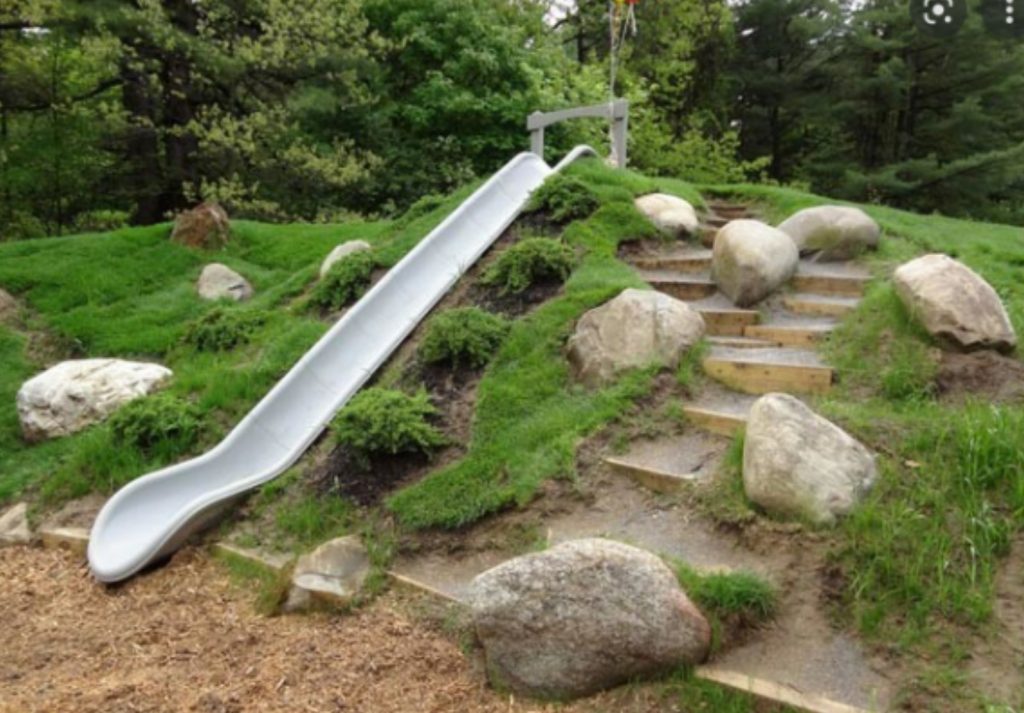
Regular picnic areas (benches/tables) should be provided, along with low visual impact resting areas e.g. flat rocks at sitting heights. Rest areas do not always have to be formal outdoor furniture.
Public art should be included on the greenway e.g. reflecting the culture of the area (e.g. sculptures featuring flying birds, the slobs link to Guinness world records, traditional sailing cots etc.)
Slobs Section
WexBUG considers that within the slobs the route should be made as attractive as possible – with the number ofexternal access points maximised so that the route can be used by residents or people arriving through Killinick and Piercestown for example. These for example would allow the route to be useful for bike commuting from Rosslare to the Johnstown campus (EPA, Department of Agriculture, Teagasc– many 100’s of mostly car dependent workers) and the tourist venue of Johnstown Castle itself would become more accessible from Wexford Town / Rosslare Port.
However, WexBUG considers that this Greenway would only be a part solution for access for active travel for many Wexford places of work. Further significant work would have to be done by Wexford County Council to link up partially accessible areas.
Next steps
The proposal for a Wexford-Rosslare greenway is another example of an exemplar project that would put Wexford’s cycling credentials on the map. The tourism, commuting and publicity benefits of the greenway would be considerable and WexBUG, as stated above, supports the proposal strongly.
We recognise that there are a number of difficult decisions to be made by the Council with regard to, for example, routing, accessibility and security, not to mind the discommoding of a small number of car-driving residents and commuters along some parts of the route. WexBUG members have the expertise and experience to know what would or would not work in certain cycling situations and we would welcome the opportunity to participate further in the design process for the greenway.
WexBUG urges Wexford County Council to stay strong, focused and brave in the design and build of this greenway.
Any short-term pain (or expectation of pain/resistance to change) will be greatly outweighed by the long term gain of having a showpiece greenway through the towns and between them. Add an engineering feature (like the cantilevered cycleway off the bridge), and Wexford’s residents and visitors will have an excellent and photogenic amenity that is truly designed and built with people and the future in mind.

